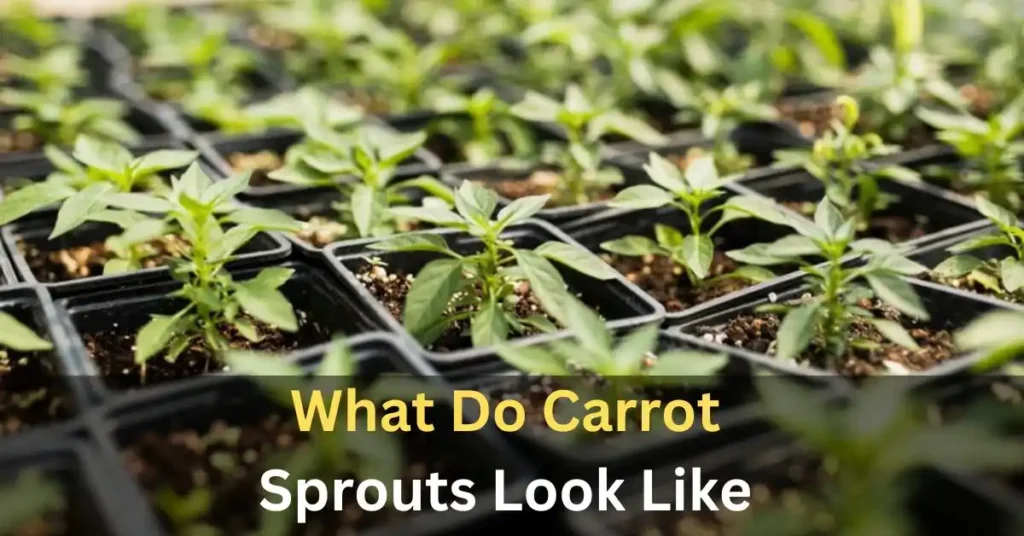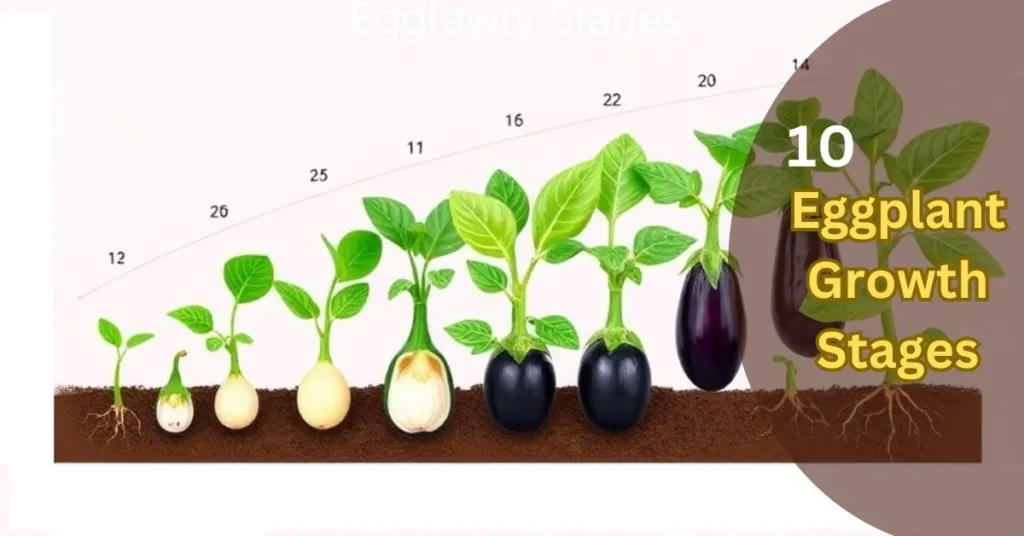If you’re growing carrots—whether as a commercial project or a fun activity at home—understanding how to identify carrot sprouts is necessary. It’s fascinating how tiny green leaves emerge from the soil, signaling a healthy beginning. Many gardeners, whether beginners or experienced, want to learn and explore the early stages of growth.
These sprouts are the first step in the propagation process, leading to robust roots later. Their delicate leaves, resembling parsley, are a key visual clue to recognizing them. Being prepared with the right knowledge helps ensure that you don’t confuse them with weeds.
As you read about their growth stages, you’ll find that carrot seedlings gradually evolve, requiring you to thin them for proper spacing. This practice encourages healthy roots and paves the way for better results at harvest time. Food enthusiasts often marvel at how these tiny greens can even be used in creative culinary endeavors.
The question of what carrot sprouts look like often excites beginners, pushing them to observe closely and nurture their plants. Watching them grow with care, fertilizing them as needed, and enjoying the journey is truly rewarding for anyone passionate about gardening.
What Do Carrot Seedlings Look Like?
When carrot seeds are sown, you’ll notice carrot seedlings emerge as small, bright green shoots that resemble tiny blades of grass. These are easy to spot because of their delicate, feathery foliage.

As they develop, the leaves become more fern-like, with finely divided, lacy edges, giving them a unique and elegant appearance. Each seedling has a single stem and can reach several inches in height, standing tall with its slender, upright growth.
Typically, they grow in clusters due to how the seeds are scattered, making it clear why proper spacing is essential for healthy plants.
Healthy seedlings indicate a strong start toward successful root development. If cared for correctly, these young plants will thrive and set the stage for a promising future crop of vibrant, tasty carrots.
What Do Carrot Sprouts Look Like?
Carrot sprouts are the first sign of life when you plant carrot seeds. They start as delicate green leaves that shoot up from the soil, looking small and thin, almost like tiny blades of grass.
These sprouts resemble other seedlings at first, but they quickly become unique. As they grow, the leaves develop a fern-like appearance, with fine, deeply lobed edges, and a vibrant bright green color.
The seedlings stand upright and can reach a height of several inches before the carrot roots begin to form underground. Their visually distinct look and healthy emergence signal healthy germination and the potential for robust carrot growth. These early stages set the tone for strong development and are essential to growing hearty carrots.
Early Carrot Sprouts
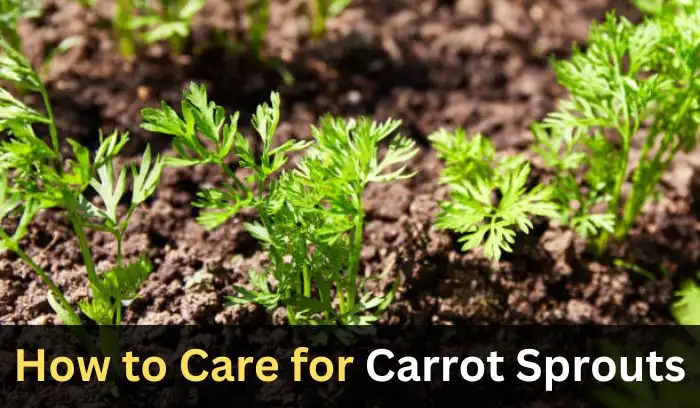
When you first plant carrot seeds, you might not expect to see much at first. As seedlings begin to germinate, they push through the soil, and that’s when the magic happens. Early carrot sprouts are quite similar to grass at first glance. However, once you know what to look for, they become much more recognizable.
These slender, green shoots are tiny and delicate, emerging with initial leaves, often referred to as cotyledons or seed leaves. These leaves are small, rounded, and they signal the beginning of a new plant’s growth.
As the carrot continues to develop, you’ll notice the sprouts becoming stronger and more defined. These green shoots will begin to stretch upward, showing their true nature as the seedlings grow.
The early stages of a carrot’s life might not look like much, but they’re a vital part of its growth, setting the foundation for the carrot to thrive and eventually produce a mature root.
Carrot Seed Leaves
Once the carrot seeds begin to germinate, the seed leaves, also known as cotyledons, will appear. These initial leaves are typically small, oval-shaped, and a bright green color.
Their smooth texture and simple structure distinguish them from the more complex leaves of a mature carrot plant, which tend to have a feathery appearance. The seed leaves provide essential energy to the young plant during its early stages of growth.
As the seedlings grow, true leaves will develop, becoming finely divided and lacy in appearance. These true leaves will take over the photosynthesis process, helping the plant thrive. The seed leaves are an important indicator of healthy growth in carrot seedlings, showing that the plant is on track to mature.
Carrot True Leaves
As the carrot sprouts grow, the real leaves start to show up.These leaves have a feathery and delicate appearance, similar to the foliage of mature carrots. The leaves are finely divided and a bright green color, resembling the leaves of parsley, a plant that is related to carrots.
At first, these leaves are small, only a few inches high, but as the plant continues to grow, they will become more prominent. Over time, the leaves will mature and contribute to the plant’s development, helping it to reach full size and strength.
Carrot Sprouts vs. Grass

When growing carrot sprouts in a pot or open area, it can sometimes be tricky to differentiate them from grass. One of the key differences is the leaf shape. While grass usually has narrow, blade-like leaves, carrot sprouts have broad, fleshy leaves, especially when they are still in their seed leaves stage.
Another distinguishing feature is the stem. Grass stems are often hollow, jointed, and closer to the ground, while carrot stems stand taller as the plant grows.
As for the arrangement, grass often appears in clusters or tufts, whereas carrot sprouts grow in neat rows when planted properly. Additionally, carrot leaves are feathery to the touch, while grass leaves are typically rigid, making it even easier to tell them apart when touching the plants.
Characteristics of Carrot Sprouts
Carrot sprouts are slender, green shoots that are small and only a few millimeters tall in their early stages. They have rounded seed leaves and, when you rub them between your fingers, they release a fragrance that smells just like carrots. The taste is subtle but still reminiscent of the root vegetable itself.
These sprouts are packed with nutrients and can be added to salads or smoothies for an extra health boost. Once they have grown a bit, they can be harvested during the first thinning of the carrots, providing a fresh and nutritious option for your meals.
Differences Between Carrot Sprouts and Other Plant Sprouts
When it comes to sprouts, each variety offers something unique. Carrot sprouts have a distinct sweet flavor, with a hint of pepper, making them stand out from other plant sprouts. In comparison, mung bean sprouts have a nutty taste, while pea sprouts bring their own earthy flavor, and mustard sprouts pack a bit of spice.
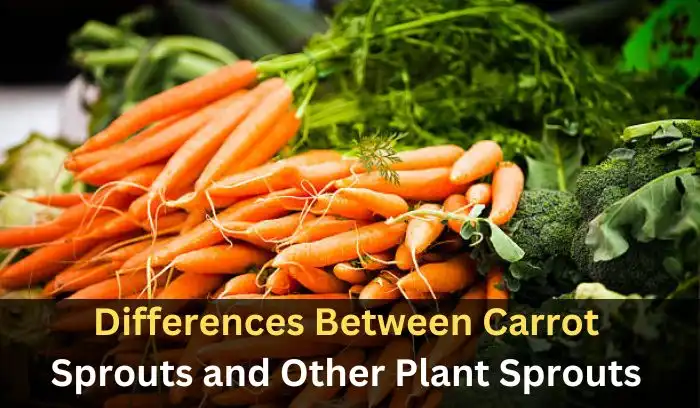
Visually, carrot sprouts tend to have broad leaves, while grass sprouts appear with narrow blades. The carrot stems grow upward, giving them a unique structure, unlike grass stems that stay close to the ground.
As for storage, carrot sprouts can last up to six weeks in the fridge, a significant advantage over other plant sprouts, which typically last only 5 to 7 days. Some varieties, like mung bean sprouts, have a longer shelf life because they are heartier, while more delicate types, like alfalfa, don’t keep as long.
These sprouts are also packed with vitamins B, vitamins C, vitamins D, vitamins E, and carotene, giving them nutritional benefits. Their slightly bitter taste pairs well with other sprouts, making them a great addition to salads or sandwiches.
How Long Do Carrots Take to Sprout?
Carrots typically take about 7 to 21 days to sprout, depending on various factors like soil temperature, moisture, and seed quality.
In ideal conditions, where the soil temperature is between 60°F and 70°F (15°C to 21°C) and the soil remains moist, the seeds will germinate closer to the shorter end of this range, around 14 days.
However, in cooler temperatures or dry soil, the process may take longer, so patience is key. Carrots are known for their slow growth compared to other vegetables, but once they germinate, they continue to grow steadily into robust plants.
How Do I Use Carrot Sprouts?
Carrot sprouts are not as commonly consumed as other plants like alfalfa or mung beans, but they are definitely edible and can be used in several interesting ways in the culinary world.
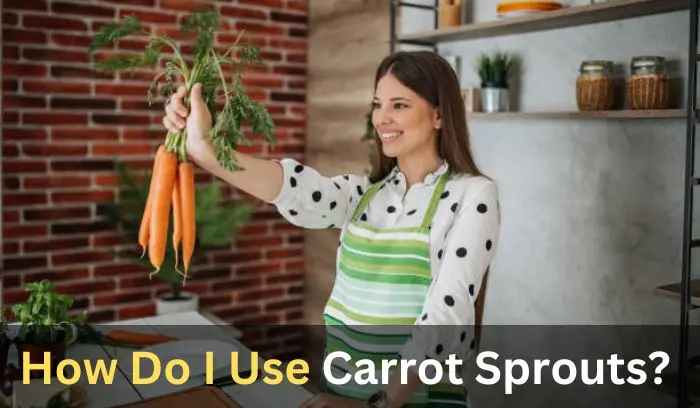
Carrot sprouts present a distinct flavor that is considerably milder than that of the mature root, although attention is typically directed towards the root vegetable itself. One great way to use them is as a garnish on dishes, adding a touch of greenery and a beautiful pop of color to the presentation.
For those looking to get creative, carrot sprouts can also be tossed into salads for an extra layer of flavor or added to smoothies and juices for an extra nutrient kick.
If you let the sprouts grow larger but harvest them before they become full-sized plants, they can also be enjoyed as microgreens. These little greens can enhance a variety of recipes, making them a versatile addition to your meals.
What Happens After Carrot Sprouts Appear?
After carrot sprouts appear, the tiny shoot will begin to develop seed leaves, also known as cotyledons. These initial leaves aren’t the plant’s true leaves, but they play a crucial role in feeding the growing plant by providing necessary nutrients.
Within a few weeks, the plant will start forming true leaves that are delicate and feathery, resembling parsley or ferns. These leaves continue to grow, helping the plant gather energy from sunlight, preparing it for further development.
As the carrot continues to grow, carrot roots begin to take shape, and in 60-80 days after sowing, the plant is generally ready for harvesting. At this stage, the carrot roots may begin to pop out of the soil, and the tops of the roots will reach a diameter of about 3/4 to 1 inch.
When it’s time to harvest, you’ll need to shake off the excess soil, but be careful not to disturb the root ends or root hairs.The tops of the carrots should be cut just above the root shoulders, ensuring that the roots remain intact for proper storage.
How to Care for Carrot Sprouts
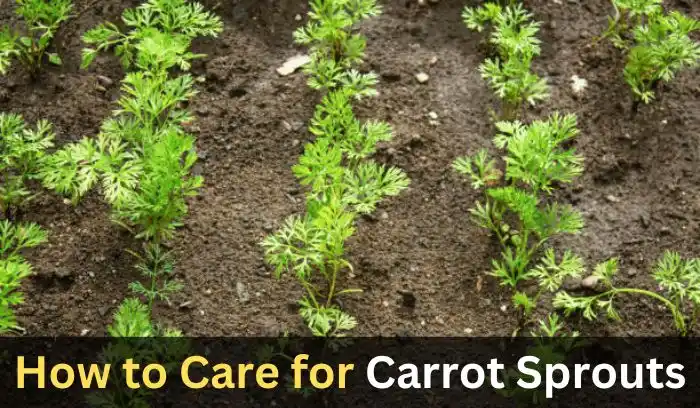
Watering and Moisture Control
To properly care for carrot sprouts, it’s important to start with the right soil that stays moist while seeds are germinating.
Once the seedlings establish, water them with about an inch of water per week, but be mindful of not over-watering, as it can cause roots to become hairy. As taproots grow deeper, they require more water to prevent stress. To monitor the moisture, you can use a moisture meter.
Weeding and Plant Care
It’s also crucial to regularly remove weeds, especially fast-growing ones that may crowd the carrots. Hoe between the rows, but always hand weed near the plants to avoid damaging the root system.
Protecting from Pests
Carrots are also sensitive to pests such as carrot flies, slugs, and snails. Protect the crop by using insect-proof mesh or setting up a barrier around the plants. Avoid the first generation of carrot flies by waiting to sow your carrots until after mid-May. For slugs and snails, you can use beer traps or Defender Slug & Snail pellets.
Temperature and Harvesting
Carrots exhibit sensitivity to temperature, with certain varieties preferring cooler conditions, while others flourish in warmer climates. When it’s time to harvest, use a fork to dig up the carrots from the ground. Carrots stored in the fridge or a sack won’t last as long as those left in the ground, as long as you can control the slugs.
FAQs
Carrot sprouts start with narrow, grass-like cotyledons, which can look like weeds. As they grow, these seedlings produce feathery, green, finely divided true leaves, making them easy to distinguish.
From experience, once the cotyledons transform into those delicate, lace-like true leaves, the sprouts are easily identified. Watch for this shift to recognize your carrots confidently.
Carrot seeds usually take 14-21 days to germinate. Since they are tiny, they should be sown shallowly and the top-most layer of soil must be kept damp during the germination period. Before planting, water deeply to ensure proper moisture for sprouting.
Sprouted carrots can still be safe to eat if the sprouts are growing at the actual root and they remain firm. However, if the carrots have been stored for a long enough time, they may become bendable, mushy, slimy, or have a rubbery feel. In such cases, it’s best to avoid eating them.
Carrot sprouts begin as delicate, feathery green leaves that shoot up from the soil. Initially, they are small and thin, resembling blades of grass. As they grow, the sprouts develop a more fern-like appearance with fine, deeply lobed leaves, turning bright green.
Carrot sprouts may die due to damping off, a fungus that attacks the stems and roots of newly emerged seedlings. This condition is common and can quickly ruin your crop. Other factors like cutworms and disease can also harm the young plants. To prevent this, ensure well-drained soil and regularly check for pests.
Conclusion
Carrot sprouts are the initial stage of a carrot plant’s life, characterized by delicate green shoots that resemble tiny blades of grass. As they grow, they develop feathery, fern-like true leaves, signaling healthy germination and preparation for root development. Proper care, including maintaining soil moisture, spacing, and weeding, is essential for their growth.
Carrot sprouts can be distinguished from grass by their rounded seed leaves and upright stems. They also emit a carrot-like fragrance. While not commonly consumed, they can be used as garnish, in salads, or as microgreens.
Carrot seeds typically take 7-21 days to sprout, depending on conditions. With patience and care, these sprouts pave the way for mature carrots, ready for harvest in about 60-80 days.
See Also:
How Long Does It Take to Grow Bell Peppers in Minnesota? A Complete Guide
Can You Apply Too Much Preen to Your Plants? 5 Risks

